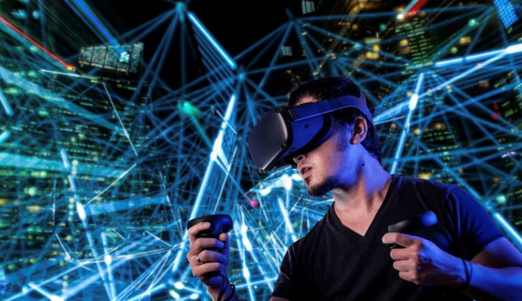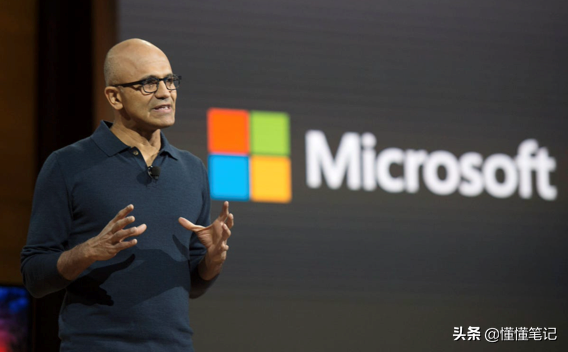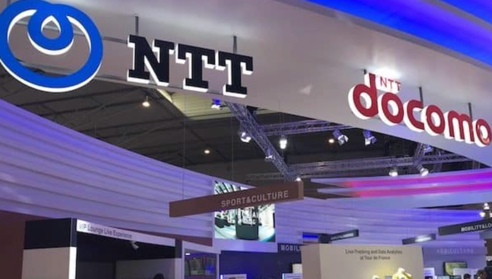What does the metaverse look like in the eyes of Nvidia, Microsoft, and record labels?
The metaverse doesn't actually exist -- at least not yet. As of today, nothing can be recognized as a metaverse in the true sense of the word.
But it is precisely because of this that the giants in the technology field and the big players in the investment field will be excited, and some have even begun to bet heavily.
Thinking back to the period before the rise of the Internet and the stage of savage growth, no one knows exactly where the bets are, and no one dares to say that their direction is correct. In the same way, in the face of the "illusory" metaverse, it is also impossible to determine that a certain type of product, technology or service is a winning chance. Among them, the core idea of the metaverse concept is a virtual, accessible, real-time interactive 3D environment, which will also become a transformative form of social and commercial participation. A more interesting question, then, might be: What track will be the biggest business opportunity in the Metaverse?
Perhaps, around computing, infrastructure and content providers, will be the first to lead?
Is Nvidia going to continue raising its share price?
The Metaverse will be the next big computing platform. Some analysts even believe that the Internet will eventually evolve into a metaverse, which will represent the next computing platform. If the concept comes to fruition, it is expected to have the same revolutionary impact on society and industry as the mobile phone did to the PC.
So, how do the core companies that provide computing power view this opportunity?
Since Facebook renamed itself Meta, the industry has been waiting for a voice from more hard-core tech companies. Today, artificial intelligence computing companies such as Nvidia have begun to announce that they will develop their own virtual worlds. Nvidia founder and CEO Jensen Huang said in an exchange with the media over the weekend that he has a grand vision for the metaverse and Nvidia's place in it.
"This is a three-dimensional extension of the Internet, and it will be much larger than the three-dimensional physical world we feel today. Likewise, the economic scale of the virtual world will also be much larger than that of the physical world." Huang Renxun emphasized that people will live in the metaverse world. Build and design more cars, buildings, more transportation forms, more clothing, shoes, hats and bags, and participate in more entertainment and leisure activities, but what role does NVIDIA want to play in it?
In his view, Nvidia's connection to the Metaverse comes from its Omniverse platform, an open-source tool that allows users to build virtual worlds. Currently, most applications are enterprise-oriented. Huang Renxun emphasized that many companies are using Omniverse to build their own "digital twins", that is, using data such as physical models, sensor updates, and operating history to integrate multi-disciplinary, multi-physical, multi-scale, and multi-probability simulation processes and complete them in virtual space. Mapping to reflect the whole life cycle process of the corresponding entity equipment. A recent example is that Ericsson is creating a version of a virtual city to determine how best to lay out its 5G network.
Speaking of the metaverse, Jen-Hsun Huang is particularly excited about the fusion of virtualization, artificial intelligence and robotics, "In the metaverse, robots can learn in millions of scenarios and then upload to the physical world as a smarter robot. ."
Huang Renxun emphasized, "In the real world, we may have millions of robots running around the world; but in the virtual world of Omniverse, we will have billions of robots, and countless robots can learn to become physical robots- —You can make a million robots out of them learn to be a good robot.”
Another type of robot could be an application of self-driving software, he stressed, that could first run millions of driving scenarios in the virtual world to learn how to best respond to various situations without worrying about learning to drive in the real world. Security Risk.
To be honest, the first impression of many consumers when it comes to Nvidia is that the price will never drop, and you will never be able to buy a high-end graphics card in stock. But beyond gaming, Nvidia wants to be involved in the metaverse in terms of computing power beyond entertainment, not just video games like Fortnite, or Ariana Grande ) virtual concert. People can use VR headsets to log into the metaverse for work, study and entertainment in the various virtual worlds described by Zuckerberg, and Huang Renxun hopes that his Nvidia will continue to play an engine in this "game".
Although the current metaverse is still in its infancy, Huang Renxun emphasized that humanity is already on the verge of a major change.
However, some analysts said that this seems to be one after another “new stories” to be told after the recent surge in Nvidia’s stock price. It can be seen that Nvidia’s stock price has soared significantly in the past three months. As of last Friday (November 12), the closing price was $303.9, an increase of about 155% from $195 in mid-August. But Jen-Hsun Huang doesn't appear to be concerned about the stock's overheating. Instead, he sees it as a response to investors' excitement about the chip giant's achievements in artificial intelligence.
At the same time, Wedbush, a well-known consulting firm, recently poured cold water on Huang Renxun. The investment report released by it pointed out that although it is optimistic about Nvidia's development prospects and long-term advantages in the AI field, it will not raise the stock to the level of 'overweight' rating. Company analyst Matt Bryson said, "We downgraded the stock to 'neutral'. Nvidia's stock price has risen 50% since the last earnings call, despite its increasing market value. , based on the comprehensive consideration of the price-earnings ratio, we can no longer give the stock an 'overweight' rating."
Two axes wielded by Microsoft
Earlier than NVIDIA, Microsoft was the software industry giant that announced the metaverse strategy almost at the same time as Facebook.
Unlike Facebook's vision, Microsoft has previously described details about its vision for the Metaverse, as well as related plans to develop a 3D app for the Xbox.
At the "2021 Ignite Conference" recently, the software giant unveiled the mystery of its metaverse 3D team. It will be primarily used for video calls and conferences, but Microsoft also has business plans for gaming and entertainment. Microsoft CEO Satya Nadella said in a recent interview with the media that the company will combine the physical and digital worlds through a series of new applications that integrate virtual environments.

"Virtual Meetings" and "TV Game" seem to Microsoft's vision of the metaverse very different from Facebook's, but also include the most accessible form of public acceptance by integrating games. When talking to the media, Nadella emphasized that Microsoft will "absolutely" focus on Xbox's metaverse games.
If you look at it by convention, perhaps some metaverse stories can appear in Microsoft's classic games. For example, is Halo going to be a metaverse. The same may be true for Flight Sim and Minecraft. Nadella emphasized, "They are still 2D in a sense, and the problem is, how do you bring it to a full 3D world? We are currently planning to do so," he added.
Indeed, when it comes to Microsoft today, you can't just think about Windows and Azure. The idea of porting the likes of Halo, Minecraft, and Flight Sim to an all-three virtual world is an ambitious project, especially if players are likely to explore them together through AR or VR headsets. At present, the prototype of Microsoft's game metaverse is gradually showing.
At Ignite, Microsoft's voice was largely focused on shared virtual spaces and mixed reality. The question is, how does Microsoft use its proprietary games and social network Altspace VR for the Metaverse app on Xbox? The outside world has also wondered if Microsoft plans to one day bring AR or VR headsets to the Xbox console system.
Satya Nadella has proposed: "The End of Windows" as the key to Microsoft's strategy. But that doesn't mean Microsoft has given up on the idea of having core apps, which are also at the heart of many workplaces. For example, its cloud operating system for online devices is Teams.

By the way, some analysts see Teams as Microsoft's take on Slack, which isn't true. While any of Microsoft's current presentations are overly idealistic scenarios, as you can see from the clips of Microsoft's Ignite keynote speech recently, its (metaverse) vision is undoubtedly very grand.
When it comes to the creation of the Metaverse, Microsoft's own advantages are mainly two: one is the Mesh platform under the MR mixed reality system, and the other is the HoloLens technology in the AR (augmented reality) field. HoloLen constructs an AR infrastructure capability that integrates software and hardware. After officially launching this smart headset with AR effects in 2016, Microsoft proposed to create an augmented reality technology system that integrates human, computer and environmental interaction technologies. However, although HoloLens is one of the leading consumer smart headsets in the industry, it has not yet achieved mainstream status in the consumer market.
While exploring the integration of AI software and hardware, Microsoft has created a mixed reality collaboration platform - Microsoft Mesh. Mesh allows support for collaborative meetings, design sessions, assisting colleagues, co-learning and social conversations across geographic teams, and is a shared virtual space whose concept is infinitely close to a "metaverse". The original Slack meeting format was prone to fatigue, which prompted the emergence of Together Mode (virtual background boards), and now Microsoft hopes Mesh can further help professionals reduce the distress of video calls all day long.
The changing landscape of Asia's tech landscape
In addition to industry giants such as NVIDIA and Microsoft, some Asian industry giants and unicorns have also recently launched related measures in the telecom operator market, blockchain and NFT fields.
On November 15, HIKKY, a virtual reality (VR) startup and organizer of the world's largest virtual reality event "Virtual Market" (Virtual Market), announced that they have raised 6.5 billion yen in a Series A funding round. ($57 million). This time, Japanese telecom giant NTT DOCOMO also appeared behind HIKKY. The strategic cooperation between the two parties has been gradually launched from the capital level to the business level.

The collaboration between HIKKY and NTT DOCOMO aims to change the world by connecting real and virtual VR experiences. HIKKY said that this round of financing will help expand HIKKY's capabilities in the field of domestic and overseas virtual reality services and consolidate its organizational structure. HIKKY's services include the Vket series of VR events, a VR engine (browser-based) called "Vket Cloud" running on smartphones and computers, and metaverse technology and development using "Vket Cloud".
HIKKY advocates the establishment of an open metaverse, where users can interact with others beyond the boundaries of the platform, and communicate and explore in the form of an open world. Vket Cloud, a proprietary virtual reality engine developed by HIKKY, can be used to create metaverse content that users can access by simply clicking a URL, without the need for a dedicated computer or mobile application. It also supports multiplayer mode, where users can communicate via voice or text chat in the same space.
Regarding the prospect of cooperation with NTT DOCOMO, the CEO of HIKKY said, "With the help of the communication infrastructure and global network of NTT DOCOMO and NTT Group, we will accelerate the deployment of the Metaverse business. At the same time, we will continue to build on our strengths, To provide XR services, technology and content for NTT DOCOMO.”
Outside of the Japanese market, South Korea's pan-entertainment giant Cube Entertainment also recently stated that it is about to embark on an "adventure" in the Metaverse. As a well-known record company, brokerage company and music production company in South Korea, Cube announced on November 15 that it will cooperate with Animoca Brands to jointly create a "K-pop music metaverse".
It is reported that the two parties will cooperate to create multimedia NFTs to map well-known actors and pop stars on the Cube roster. The NFTs will feature images such as these Korean artist portraits and album offerings, and will also include digital sound sources such as full albums. As the project promoter, Yat Siu, founder of Animoca Brands, said in an interview with the media that he can't wait to start working with Cube to "make the open metaverse a reality." According to Xiao Yi, the partnership provides “real digital property rights and other blockchain benefits” for Cube artists and their fans, and will continue to be popularized in the entertainment industry in the future.
When it comes to Animoca Brands, the partner of Cube this time, it is definitely a topical company: it is an investment pioneer in the field of NFT games, and it is also the darling of the capital market. At the beginning of July this year, Animoca Brands completed a financing of up to 138.88 million US dollars, led by the well-known Blue Pool Capital (Blue Pool Capital), with a valuation of 1.1 billion US dollars. By October, Animoca Brands had raised another $65 million, doubling its valuation to $2.2 billion. Investment institutions in this round of financing include Liberty City Ventures, Ubisoft Entertainment, Sequoia China and other giants. The previous investor, Blue Pool Capital, is said to manage part of Jack Ma’s wealth and most of Cai Chongxin’s $8 billion in assets, and investing in Animoca Brands is his first foray into the chain game industry.
Although blockchain and NFTs are mentioned, the outside world will inevitably look at them differently, but Xiao Yi seems to be very confident: he believes that the outside world has long been debating the destructive forms of ownership brought by NFTs and the hype that NFTs are easy to trigger. But he still likened the impact of irreplaceable NFTs on the advancement of property rights to the "European Renaissance" that emerged in July 2020.
Like my work? Don't forget to support and clap, let me know that you are with me on the road of creation. Keep this enthusiasm together!
